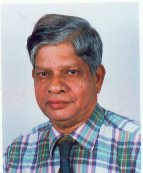Hydrogen: A Dream or Delusion? : Greentech Media Hydrogen.
In green technology circles, just mentioning the word is enough to start an argument.
Hydrogen could become a ubiquitous source of electricity and heat, say advocates. Plus, it’s somewhat prevalent. Hydrogen remains the most abundant element in the universe and every molecule of water contains two atoms of hydrogen.
Wednesday, June 1, 2011
Wednesday, March 23, 2011
Breakthrough in nanocomposite for high-capacity hydrogen storage
Breakthrough in nanocomposite for high-capacity hydrogen storage: "Now, scientists with the U.S. Department of Energy (DOE) Lawrence Berkeley National Laboratory (Berkeley Lab) have designed a new composite material for hydrogen storage consisting of nanoparticles of magnesium metal sprinkled through a matrix of polymethyl methacrylate, a polymer related to Plexiglas. This pliable nanocomposite rapidly absorbs and releases hydrogen at modest temperatures without oxidizing the metal after cycling -- a major breakthrough in materials design for hydrogen storage, batteries and fuel cells."
Sunday, February 20, 2011
Cheap, clean ways to produce hydrogen for use in fuel cells? A dash of disorder yields a very efficient photocatalyst
Cheap, clean ways to produce hydrogen for use in fuel cells? A dash of disorder yields a very efficient photocatalyst ScienceDaily (Jan. 30, 2011) — A little disorder goes a long way, especially when it comes to harnessing the sun's energy. Scientists from the U.S. Department of Energy's Lawrence Berkeley National Laboratory (Berkeley Lab) jumbled the atomic structure of the surface layer of titanium dioxide nanocrystals, creating a catalyst that is both long lasting and more efficient than all other materials in using the sun's energy to extract hydrogen from water.
Hydrogen cartridges fuel laptops and phones for outdoor enthusiasts
Hydrogen cartridges fuel laptops and phones for outdoor enthusiasts ScienceDaily (Feb. 18, 2011) — How does a Michigan State University scientist fuel his enthusiasm for chemistry after 60 years? By discovering a new energy source, of course.
This week, SiGNa Chemistry Inc. unveiled its new hydrogen cartridges, which provide energy to fuel cells designed to recharge cell phones, laptops and GPS units. The green power source is geared toward outdoor enthusiasts as well as residents of the Third World, where electricity in homes is considered a luxury.
The spark for this groundbreaking technology came from the laboratory of James Dye, SiGNa's co-founder and University Distinguished Professor of Chemistry Emeritus at MSU. His work with alkali metals led to a green process to harness the power of sodium silicide, which is the source for SiGNa's new product.
This week, SiGNa Chemistry Inc. unveiled its new hydrogen cartridges, which provide energy to fuel cells designed to recharge cell phones, laptops and GPS units. The green power source is geared toward outdoor enthusiasts as well as residents of the Third World, where electricity in homes is considered a luxury.
The spark for this groundbreaking technology came from the laboratory of James Dye, SiGNa's co-founder and University Distinguished Professor of Chemistry Emeritus at MSU. His work with alkali metals led to a green process to harness the power of sodium silicide, which is the source for SiGNa's new product.
Subscribe to:
Posts (Atom)


